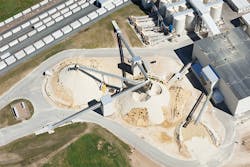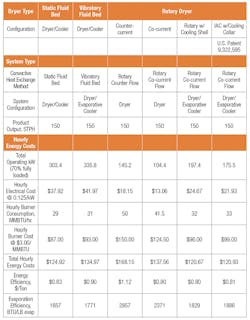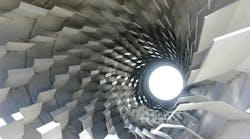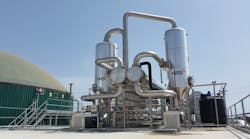Bob Mcilvaine is the president of the Mcilvaine Company in Northfield, Illinois. The Mcilvaine Company provides market research and technical analyses on industrial processing sectors and equipment. Mcilvaine may be reached at [email protected] or 847-784-0012, ext. 112.
Industrial dryers are used with a wide range of feed materials and in a number of processes from food processing to paper and pulp to pharmaceuticals to water treatment. Unique designs have been developed to cope with the many variables found in each processing industry. Each design must address:
• Feedstock parameters: Particle size and shape, incoming moisture and particle flow characteristics
• Final product parameters: Quantity needed, moisture content and condition. (Some feedstocks can be altered by heat and this has to be taken into account.)
• Total cost of ownership: Initial cost, maintenance and repairs, energy costs and expected life. The cost of lost production will vary by process.
Many manufacturers offer dryers for specific processes with which they also provide systems. For example, GEA, one of the largest technology suppliers for food processing, has become a world leader in spray drying powdered foods. Spray dryers are unique in that they create particles from the liquid being evaporated.
GEA was also the first spray dryer supplier to enter the market for flue gas desulfurization where lime slurry is introduced through a rotary atomizer. The resultant gypsum is collected in a fabric filter or precipitator.
The Austrian plant engineering group Andritz has developed specific dryers for various pulp and paper applications, such as flash drying, which is typically used in integrated mills where excess pulp is dried and sold as market pulp. According to Andritz, the investment for flash drying systems is much lower, in general, than for sheet drying systems for pulp and paper plants.
Today, smart solutions are available for operators demanding the highest reliability, productivity and safety in the pulp-drying area. For example, advanced sensors providing improved transparency of process and machine condition, coupled with intelligent process controls, quality control and diagnostics systems secure high and also stable performance throughout the entire pulp-drying line.
An example of such smart solutions for drying applications is the Andritz Metris addIQ control system, which is tailored for the liquid/solid separation business. The company says this system combines automation solutions with digitalization to enhance availability, minimize production costs, increase overall equipment efficiency, and reduce the risk of operating errors, resulting in the high degree of reliability.
Table 1. Frac sand dryer comparison. Information courtesy of IAC
One of the largest new markets for dryers has been manufactured sand for hydraulic fracturing. These plants clean and improve the quality of local sand thus eliminating the freight costs associated with transporting Northern white sand.
Industrial Accessories Company (IAC), an EPC contractor for industrial manufacturing companies, has a new rotary dryer design that incorporates a cooler following the drying section of the rotating drum. The company says adding a cooler offers benefits of lowering exiting sand temperature to protect downstream equipment and lowering the temperature to improve efficiency. A partial amount of moist sand feed material is added into a second inlet into a cooling section and blends with the hot dried sand from the dryer. Evaporation of water from the additional moist material promotes cooling of the dried sand from the dryer. The heat from the dried sand is used for drying the additional quantity of moist sand introduced into the cooler. The energy consumed for drying and cooling are significantly reduced. The total production rate is improved by the addition of sand into the second inlet. The dryers are also able to handle moisture levels of 10-12%. IAC conducted a detailed analysis of life cycle costs of various dryer types used by frac sand plants. The data displayed from this analysis in Table 1 is the basis for the IAC claims of low total cost of ownership.
Frac sand plants provide unique conditions and demands. Dryers that have been tailored to this application can provide lower total cost of ownership results. This specific application is only one of an entire spectrum. Each dryer type has advantages somewhere in the spectrum. Energy costs associated with drying are significant. There will continue to be opportunities to lower energy costs for improved cost-effectiveness.




